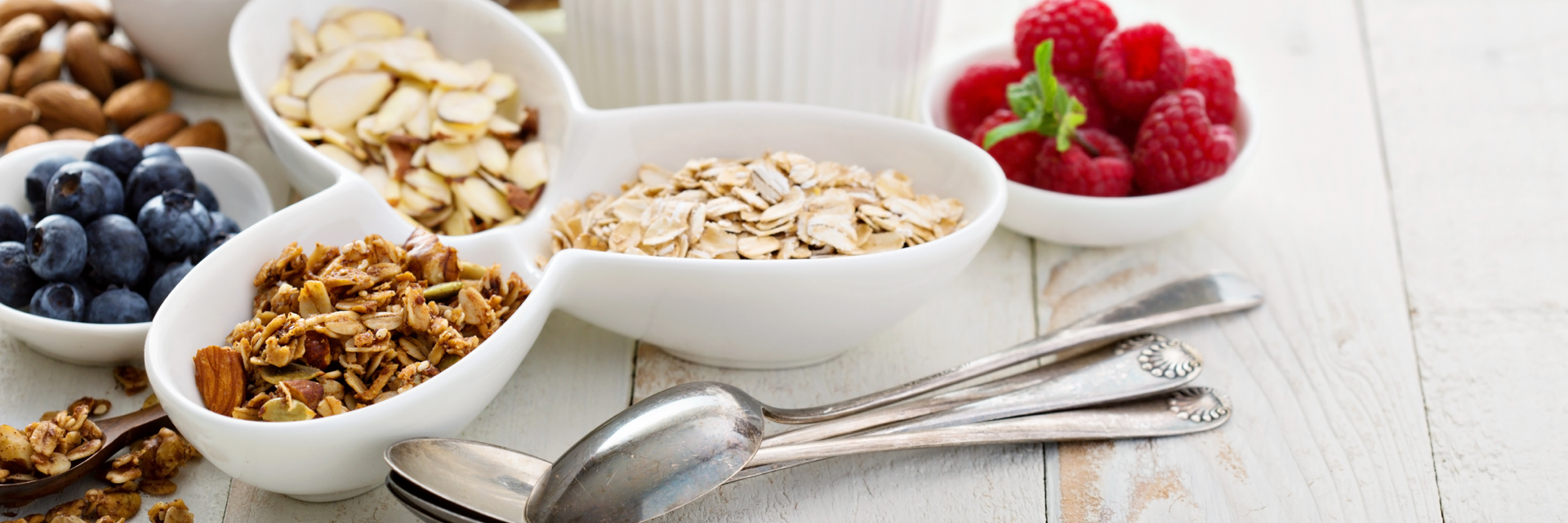What are high fibre foods, and what is dietary fibre? Fibre is a type of plant-based material found in some foods that aids in healthy digestion. Many foods contain little or no fibre at all, but there are plenty that contains enough to help you reach your full daily requirement of 30g. Read on for our top 5 high fibre foods list, and be sure to explore our guide to a balanced, cholesterol-lowering diet afterwards.
5 examples of high fibre foods
- Wheat, corn and oat bran – up to 11g fibre per 15g serving
This under appreciated foodstuff is a by-product of cereal production. When seeds are milled, the hard outer layers are ground away, and this goes on to become bran. It may not sound appetising, but many commercially popular breakfast cereals use bran as an ingredient, and for good reason: corn bran, for example, can provide a whopping 4g of fibre per 5g eaten.
Bran is best added to low-fat yoghurt, cereal, and porridge. When baking, try substituting around 25g of bran per cup of flour in the recipe for extra chewiness and a rewarding earthy flavour boost. - Barley – 8g fibre per 50g serving
Like many grains, barley is an essential part of a high fibre foods list. Incredibly versatile, you can scatter it into a crumble topping, stir it into batter and dough, leave a spoonful or so to plump in soups and stews, or boil it in water or stock before draining to eat as you would rice. It makes a perfect salad ingredient, pretty on the plate and with enough bite to not dissolve in a dressing. - Chia Seeds – 8.5g fibre per 25g serving
You can’t move for chia seeds if you are on the look for high fibre meals – they’re more affordable than ever before, and while the full range of their health benefits is up for debate, there’s no arguing they’re great examples of high fibre food: 34g per 100g in fact. Chia seeds can be bought in supermarkets, health food shops, and wholesalers in a variety of grades. They’re incredibly versatile too: try adding them to pancake batter, smoothies, cereal, low-fat yoghurt, and baking. For a sweet treat, try dipping a banana in honey, then a bowl of chia seeds. - Dried Pulses – up to 12.5g fibre per 50g serving
Kidney, fava, lima, and mung beans could make their own list of high fibre foods. In fact, pretty much any pulse is worth checking out as a source of fibre. Canned and dried beans and pulses are nutritionally similar, so don’t worry if you don’t have time to soak dried beans overnight – just get the can opener out. The sauces and water that canned beans are kept in can be sugary or salty, so rinse the beans in a colander before eating them. There’s not much you can’t do with beans and pulses. Stew, curry, hotpot, burgers, fritters, casseroles are all good examples of high fibre meals, or you can serve them on their own as a side. - Popcorn – 4.5g fibre per 30g serving
It may surprise you to find such a common snack on a high fibre foods list, but home-popped corn is actually a great source of fibre. Popcorn bought from the cinema or pre-popped in bag tends to have added salt or sugar, so be careful how much you eat. On the other hand, you can find popping corn in most supermarkets, and all you need to pop it in a saucepan, microwaveable container, or a popcorn maker. To make home-popped corn a little tastier, try adding garlic powder, olive oil, and any mixture of herbs. Sprinkle with pepper to finish!For more information on fibre and its benefits, be sure to check out our guide ‘What is fibre?’. And to get regular doses of a healthy diet and lifestyle advice in your inbox each month, sign up to our e-newsletter here.
This information has been included in good faith, but is for general informational purposes only, and should not be construed as a guarantee. The nutritional facts and statements on this site are designed for educational and resource purpose sonly, not being substitutes for professional advice. If you have any concerns or questions about your health, you should always check with your GP or healthcare professional.

